May 12, 2025
A Minimal Change for Maximal Speed - A Unique Universal Geneve Compax

Marcus Siems @siemswatches
Collector, Author, Data Analyst
What makes a watch unique are often not the most obvious features. Details... details matter. And sometimes a small detail doesn't only make a unicorn but will tell you a story of time itself. Don't believe me? Let me show you:
 A special watch with a special dial. But do you see right away what makes this piece so special? Photo Courtesy of Luca Mignini (@UniversalPeopleUniversalDreams).
A special watch with a special dial. But do you see right away what makes this piece so special? Photo Courtesy of Luca Mignini (@UniversalPeopleUniversalDreams).
It's hard to see at first but the dial is showing you a close to unique feature. Have you noticed it already? Let's break the watch down: We got a black dial with golden font, pencil hands, luminous hands, numerals (11-12-1) and hour-marker dots (2-10). It is a Compax so you got three sub-dials - running second at 9, chronograph minute and hour at 3 and 6o'clock. It got an inner Telemeter- and out Tachymeter-scale... And that last bit is where you need to focus. The Tachymeter is this pieces' specialty - a Base 3000 Tachymeter.
1) What is even a Base-3000 Tachymeter?
To understand what makes this feature so special we have to zoom out again. First, a tachymeter on a watch is meant to measure speed. Speed - as the change of position over time - needs a spatial reference frame. That is typically 1000 meters (=1km), thus a Base-1000 tachymeter*.
It works as follows: You start your chronograph at the start of the 1km and stop when you have passed the second milestone (kilometerstone?). The scale now converts the passed time into speed. For example if it takes you 60 seconds you were travelling at 60km/h. If it takes you only 20 seconds, your speed was 180km/h. 5 seconds for 1km converts to 720km/h... etc. etc.
 The outer tachymeter scale can convert measured time into speed. Speed is the time it takes to travel the base unit of distance, here Base-1000. The shorter the time, the faster you are... the type of physics we all can still follow. Photo shows a 1930s Zenith Compax, from Goldammer Archives.
The outer tachymeter scale can convert measured time into speed. Speed is the time it takes to travel the base unit of distance, here Base-1000. The shorter the time, the faster you are... the type of physics we all can still follow. Photo shows a 1930s Zenith Compax, from Goldammer Archives.
Those are the basics but what difference does it now make to change the base from the standard 1000m to 3000m? What is the use-case? It becomes obvious when we take a closer look at the shorter periods and thus higher velocities. For example for a speed of 1000km/h you need only 3.6 seconds for 1km. But that's only when your trigger finger on the chronograph is extremely accurate. Just one "tick"+ (1/5th of a second) faster or slower gets you to a 5% inaccuracy of your measurement (1059km/h and 947km/h, respectively). Besides, you aren't actually able to "read" anything that narrow on the scale.
Thus, changing to Base-3000 means that you "multiply the speed" for the same time passed by three and vice versa also the difference between speed-steps by three. While on a Base-1000 the difference between 1200km/h and 1000km/h is only 0.6 sec it is 1.8 sec on a Base-3000, which is a lot more manageable for our normal human reaction times.
 Comparing the scales on a Base-1000 (left) and Base-3000 (right) tachymeters. Photos Courtesy of Luca Mignini (@UniversalPeopleUniversalDreams) & Goldammer Archives.
Comparing the scales on a Base-1000 (left) and Base-3000 (right) tachymeters. Photos Courtesy of Luca Mignini (@UniversalPeopleUniversalDreams) & Goldammer Archives.
All of these numbers and calculations for just two simple conclusions: Changing the Base from 1000m to 3000m improves your measurement accuracy and enables to clock higher velocities! But why stop at 3000m? Is there another reason for this specific reference distance?
2) The Sky-High Race for Excellence
The early 20th Century saw a new frontier of humanity conquered - mankind started the exploration of the sky. By the 1920s the engineering breakthroughs became a testing ground for fearless pioneers. And where man strive they start to better each other. Who flies the farthest, the highest and - of course - the fastest. The first records for flight velocities date back to the roaring 20s. And the official world record measurements were executed by the F.I.A. - the Federation Aeronautique Internationale [source].
And drum roll please: The official world record for the fastest plane was measured as the average velocity over a 3000 meter straight course [source]. Flying in both ways to cancel the effects of potential head/tail-winds.
 The Douglas D-558-I Skystreak at the 3km mark flyover during its record breaking flight on August 20th 1947 at Muroc Dry Lake. With 1,031.178 km/h it became the fastest first piston engine aeroplane at the time and only the second ever to break 1,000 km/h. Photo Courtesy of ThisDayInAviation.
The Douglas D-558-I Skystreak at the 3km mark flyover during its record breaking flight on August 20th 1947 at Muroc Dry Lake. With 1,031.178 km/h it became the fastest first piston engine aeroplane at the time and only the second ever to break 1,000 km/h. Photo Courtesy of ThisDayInAviation.
Several historical figures of the time edged their names into the FAI record books including Amelia Earhart (1930), James H. Doolittle (1932) and Howard Hughes (1935) [source].
One can assume that a Base-3000 chronograph, this limited in production, might very well have been targeted specifically to these pilots. The perfect dial twist for the men and women risking their lives a couple feet above salt lakes. They might have been commision watches/dials but that is speculation at this point. And this also wouldn't be "very UG" as I'll address in a bit.
 The Universal Geneve Compax "Base-3000" that started the quest for its origin. Here, on the wrist of its owner - Luca Mignini (@UniversalPeopleUniversalDreams).
The Universal Geneve Compax "Base-3000" that started the quest for its origin. Here, on the wrist of its owner - Luca Mignini (@UniversalPeopleUniversalDreams).
3) Beyond the Dial - The Watch Itself
But first let's dive a little deeper into the story of this particular example. The piece surfaced a couple weeks ago on a Universal Geneve collector's gathering in Milano at Bernardini's. Luca Mignini, UG chronograph super-collector and friend, just acquired this unicorn** and it quickly made the rounds through social media. This non-standard ref. 5923*** comes with a stunning "Patek 570"-esque coin-edge case in 18k yellow gold made by Croisier (Geneva key #5) and features a UG cal. 285. The serial number - 647,xxx - underlines it also as being from one of the very first Compax batches ever produced (in 1937).
The dial - apart from the 1000-to-3000 exchange - is very specific to time. You will find the layout with inner luminous hour marker plots only during the late 1930s. And this particular handset is quite unique in itself. Interestingly, this specimen shares quite a few features with another elusive Universal Geneve chronograph from 1937 - the Contax (see [here]).
Truly a watch that'll be noticed!
 Case and movement specifics of the Base-3000 Universal Geneve Compax ref. 5923 in 18l gold. The watch comes with a cal. 285 and a case made by master case maker Georges Croisier from Geneva (Key #5). The "Brevet + Demande" signature denotes the patent pending status of the UG chronograph mechanism and further helps to date the watch to 1937. Photos Courtesy of Luca Mignini (@UniversalPeopleUniversalDreams).
Case and movement specifics of the Base-3000 Universal Geneve Compax ref. 5923 in 18l gold. The watch comes with a cal. 285 and a case made by master case maker Georges Croisier from Geneva (Key #5). The "Brevet + Demande" signature denotes the patent pending status of the UG chronograph mechanism and further helps to date the watch to 1937. Photos Courtesy of Luca Mignini (@UniversalPeopleUniversalDreams).
4) The Curious Case of Universal Geneve's Early Compax Production
I teased it a bit during the previous section but it's worth to discuss the point in a little more detail: Around 1937 Universal Geneve introduced their first hour-counter chronographs (the Compax) - and this feature alone wasn't enough. It appears UG was inventing several new use-cases for these wrist stop-watches. And they did so by including small twists and tweaks to the presentation of time. Universal Geneve as The all-purpose chronograph maker in 1937:
First, the presented Base-3000 tachymeter for faster and more accurate speed measurements and a potential use in high-speed aeronautics. Second, the Contax with an additional (hidden) countdown chronograph function (for details see [here]). Third, the 'basic' Compax with hour-counter. And fourth, let's not forget the even more 'basic' Uni-Compax without hour-counter was also introduced around 1937 ([here]).
And if we play that game a little further there's another very special Compax modification from just a couple years later:
 The Film-Compax ref. 22522: Another Universal Geneve invention featuring a specialized scale. Here, to measure the length of film tape needed for the measured time duration (in feet). Photo Courtesy of Fratello Watches, Sasha Davidoff & Mr.A.
The Film-Compax ref. 22522: Another Universal Geneve invention featuring a specialized scale. Here, to measure the length of film tape needed for the measured time duration (in feet). Photo Courtesy of Fratello Watches, Sasha Davidoff & Mr.A.
The ref. 22522 "Film-Compax" was introduced in 1945. Less than a dozen examples have surfaced (see [here], [here]). And like the "Base-3000 Compax", the ingenuity comes from the use of the outer - chronograph-operated - scale. The Film-Compax was meant to measure the amount of film tape used (in feet) for a specific time interval.
However, in contrast to the "Base-3000" the "Film-Compax" was genuinely named for the purpose and officially marketed as well ([here]). Further, research has shown that the "Film-Compax" seem to have been exclusively sold within the US ([here]).
 A 1949 U.S. market Universal Geneve catalogue excerpts displaying how UG tried to place the Compax as an all-purpose watch for filmmakers, pilots, business men, jetsetter, racer, athletes and so many more. See also the 'Universalone' (right) that has been marketed as the "Aviator's Compax". Catalogue Courtesy of Dre (OmegaForums).
A 1949 U.S. market Universal Geneve catalogue excerpts displaying how UG tried to place the Compax as an all-purpose watch for filmmakers, pilots, business men, jetsetter, racer, athletes and so many more. See also the 'Universalone' (right) that has been marketed as the "Aviator's Compax". Catalogue Courtesy of Dre (OmegaForums).
With the "Base-3000 Compax" it's a little different though... If you don't know what you're looking at you'll likely miss the Tachymeter feature completely. Comparing this to modern standards of production quantities isn't it fascinating that Universal went to this lengths to make an almost one-of-a-kind collection?
More importantly, this makes me wonder: If Universal Geneve really made a Compax for every purpose, what else did we miss...?
Addendum
I must say the hive mind works at the speed of light. Within 12 hours after the initial publication of the article I got messages leading to the identification of an additional six Base-3000 dials. This puts the number of known examples to at least 8 watches.
On top, we could identify the steel variant as ref. 5160 and an additional later batch of this dial in the 735.xxx range (1939) in ref. 12424 pieces. The dial versions were also coined "11-12-1" dials due to their numeral arrangement by Mark020 before. He was also the one showing me most of the additional examples. So without further ado, here are 7 more examples:
 Additional 7 Base-3000 Universal Geneve Compax dials from 1937-39. Photos Courtesy of Mark020 (Omega Forum), Nicola1960 (Orologi Forum), Gravina (Orologi Forum), Christie's New York, Menta Watches, Tamiris Cavalho.
Additional 7 Base-3000 Universal Geneve Compax dials from 1937-39. Photos Courtesy of Mark020 (Omega Forum), Nicola1960 (Orologi Forum), Gravina (Orologi Forum), Christie's New York, Menta Watches, Tamiris Cavalho.
Based on this increased sample size we can also draw a couple new conclusions about the dial. First, as Mark020 correctly pointed out, all of them appear to display Arabic numerals at 11-12-1. Second, we can pin the dial maker down to Stern Frères (see also [here]). The backside of one of the dials visibly features the star (Stern (Germ.) = star) and the batch number 68-144 (68 for dials supplied to Universal Geneve).
Lastly, the hands appear to follow the primary functionality of the watch itself. As mentioned before they are rather short luminous pencil hands, something you won't see exactly like this on other pieces. This improves (imho) the legibility of the outer tachymeter scale. I would thus argue that longer - more classic - Compax handsets are replacements. An interesting deviation are the short baton hands from the later 735.852 example (Menta Watches), which deviate from the luminous pencil hands but share the same legibility-logic.
Acknowledgements
I must thank Luca Mignini (@UniversalPeopleUniversalDreams) for giving me this scoop - yet again! It is passionate collectors like Luca that make it so worthwhile investing time in understanding and communicating the beauty of vintage watches and how astonishing their stories can be.
Further, the accumulated data from Mark A. (Mark020) is a true treasure trove for everything Universal Geneve and never fails to amaze! Thank you so much for your help - again - Mark.
Footnotes
+ One tick means one motion of the chronograph hand. Time comes in discrete units in mechanical watches. A caliber 285 from Martel/Universal Geneve has a frequency of 5Hz, thus ticks 5 times a second and the minimum time interval that can be measured is thus 0.2 seconds.
* You can also use 1 mile as base and the speed on the tachymeter could be read in miles per hour.
** In the meantime another Base-3000 example surfaced (via sources). It is a steel example with white dial. Case design and dial configuration match the presented piece.
*** At least two 18k yellow golden ref. 5922 pieces are part of the elusive Contax collection (see for example [here], [here]). If UG followed a similar logic with referencing steel Base-3000 Compax pieces should be right around ref. 5126 (same case design steel Contax). By the way, reference numbers seem to refer only to case design and utilized caliber class - in other words a ref. 5923 can come as a cal. 285 Compax ([1]), Compur ([1], [2]) or Uni-Compax ([1]).
All rights on text and graphics reserved to the Author.




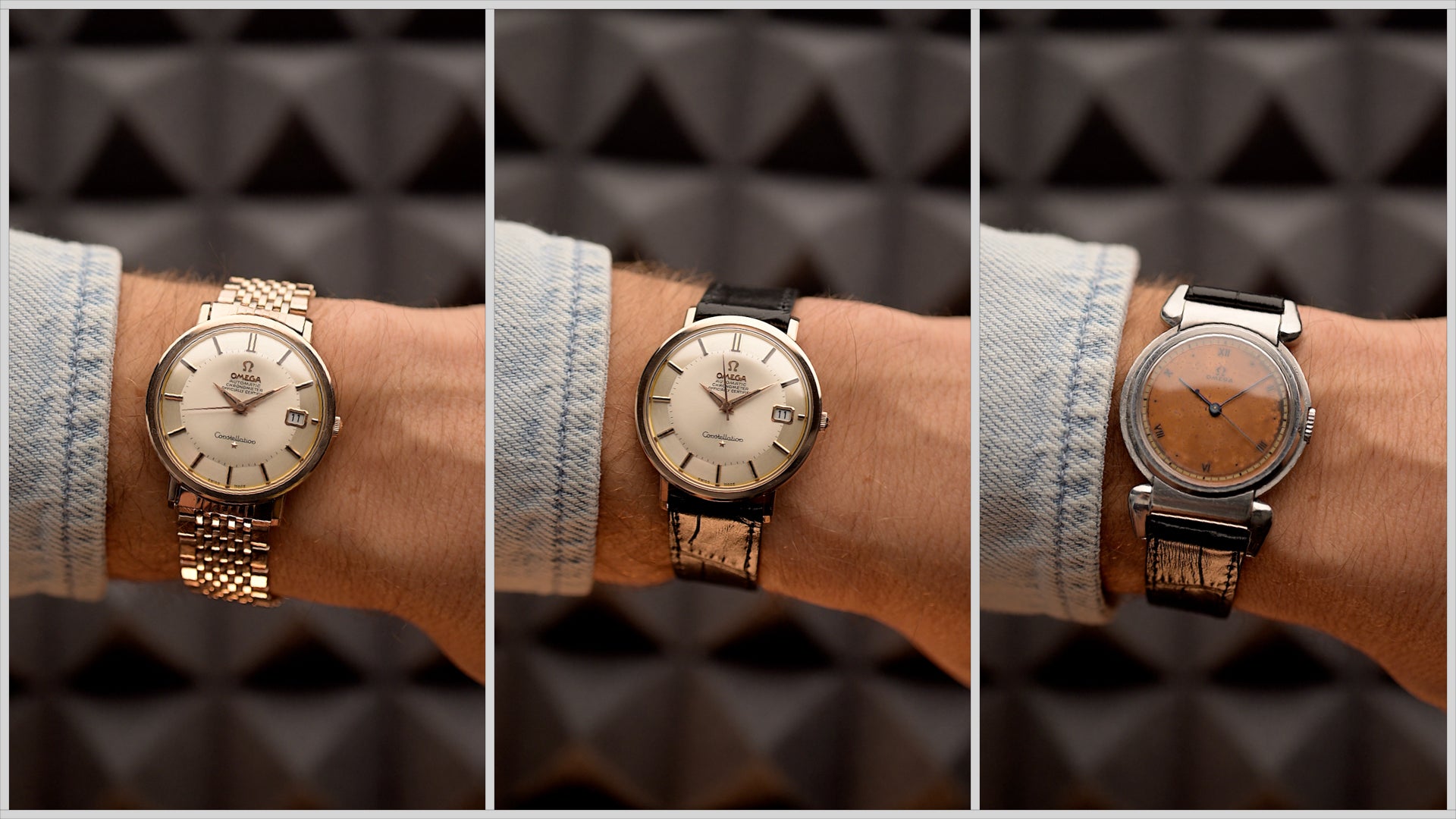
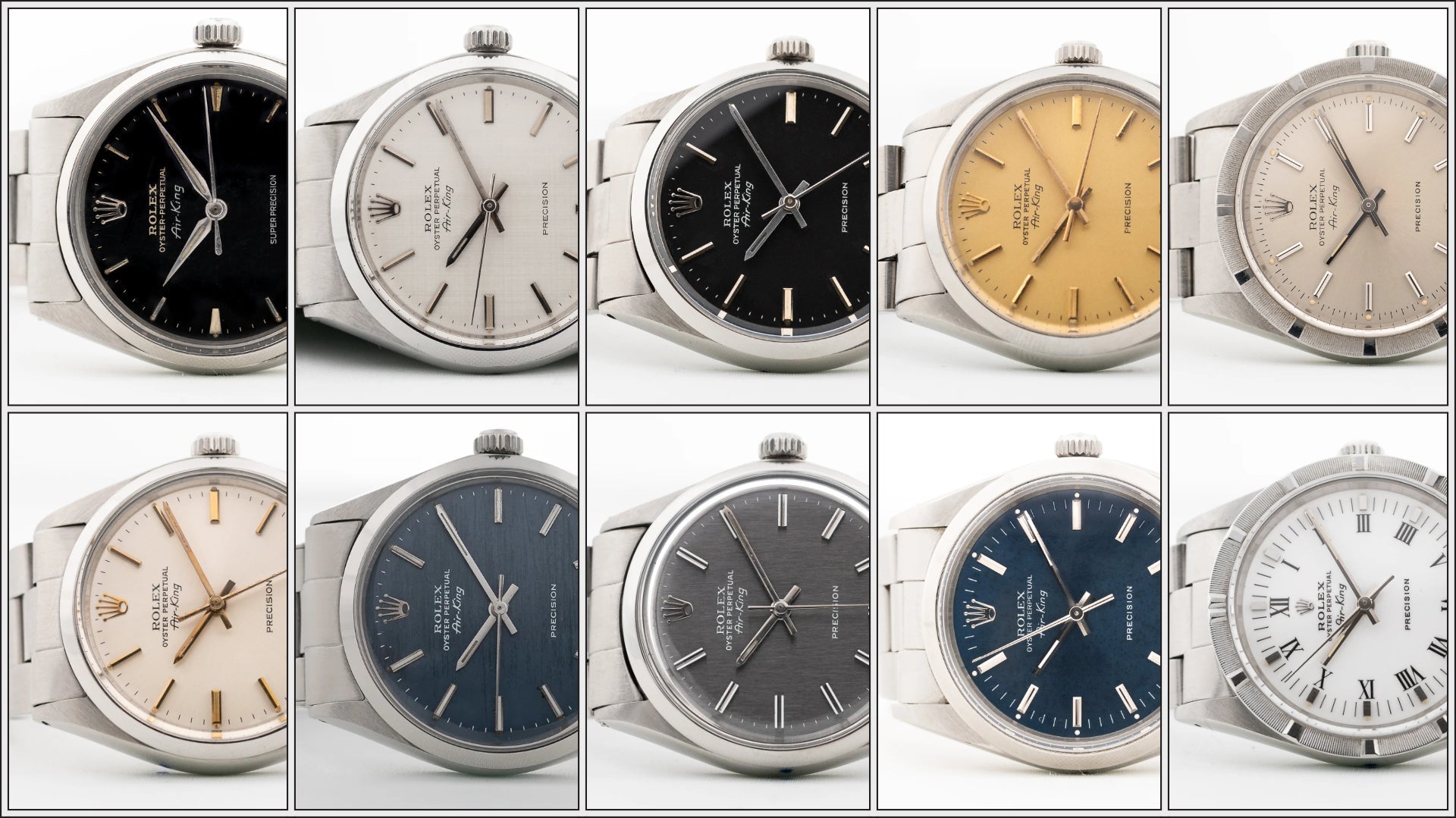
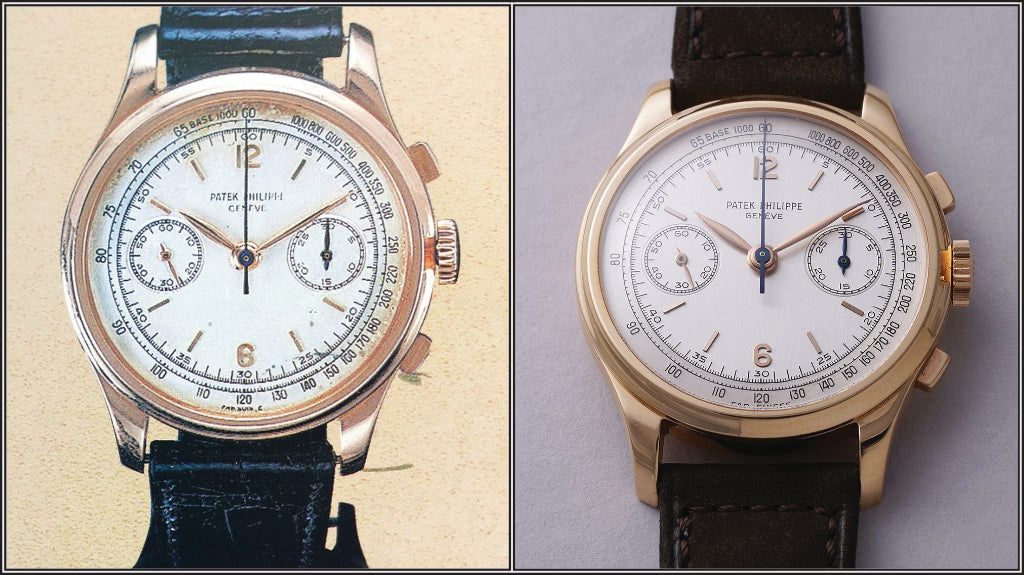
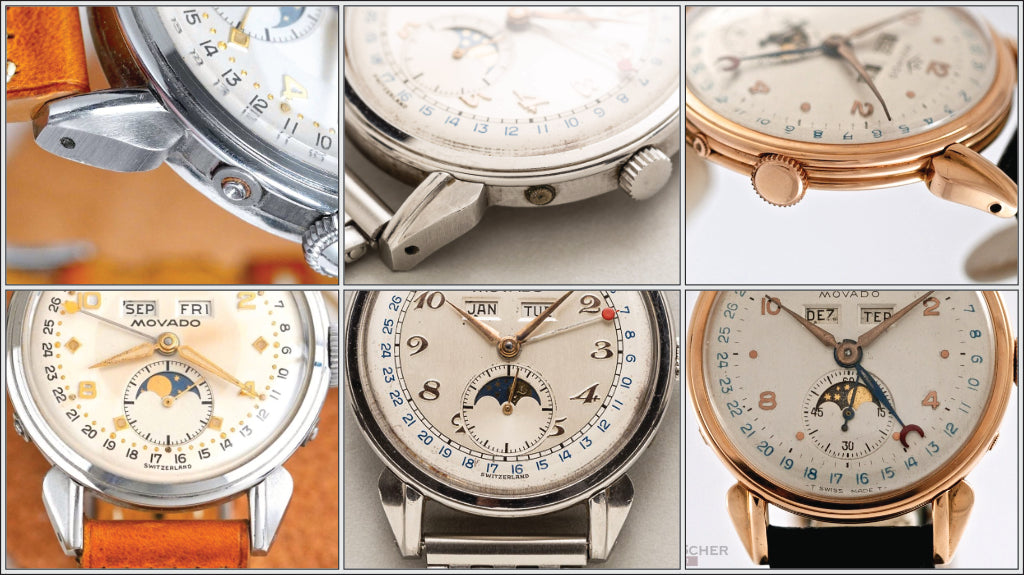



















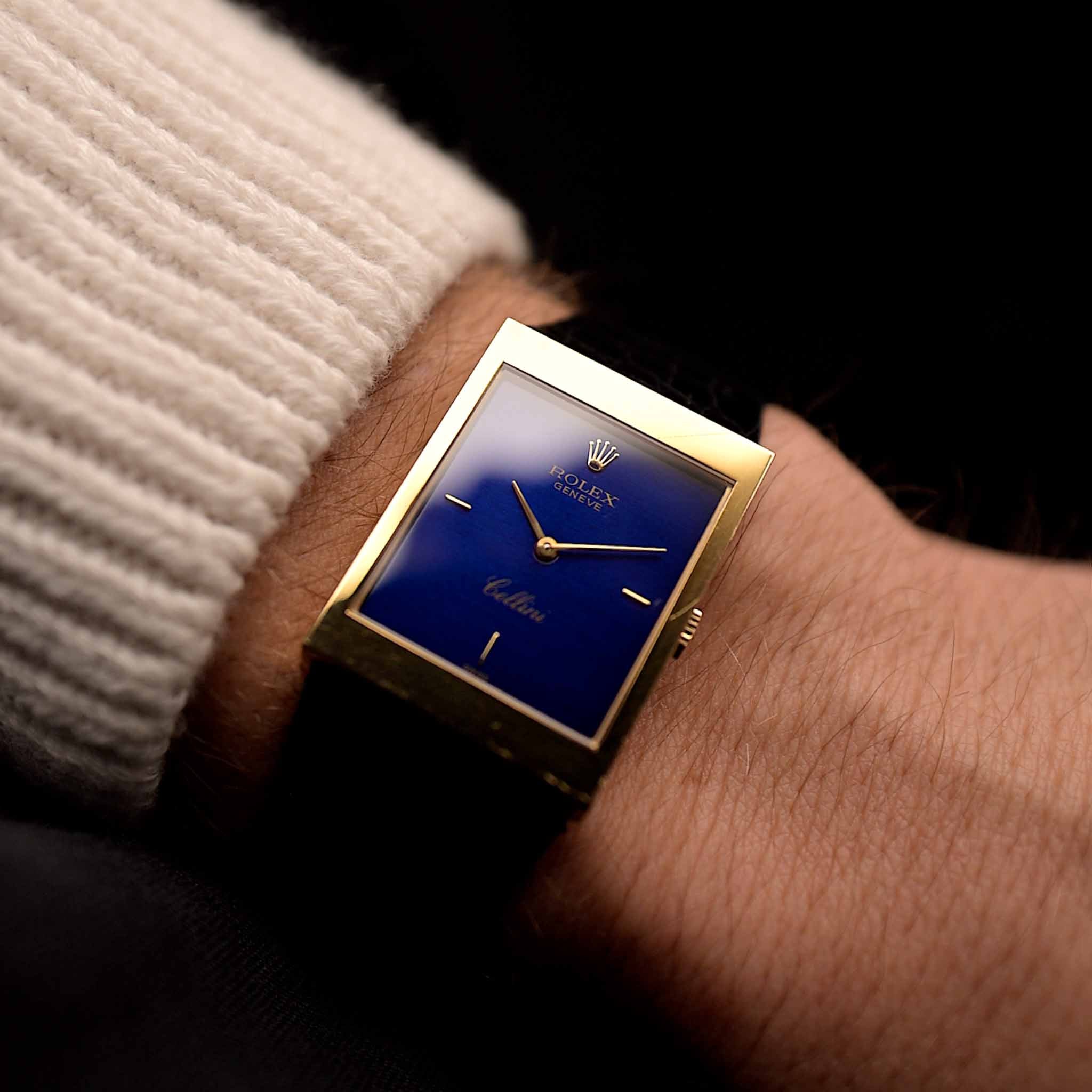
Leave a comment